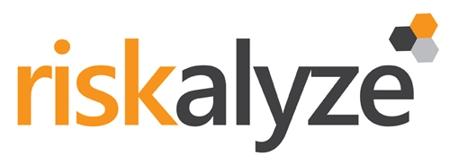“Josh, you promised me five minutes to show this to you. I promise you’re going to love it.”
Dude, I have a million things going on…
“I know, but putting this in front of you was one of the main reasons I flew down here, at least let me demo it for you. Five minutes, I promise.”
Yeah but…
“Josh, trust me, you need to see this.”
That’s Aaron Klein, founder and CEO of Riskalyze hocking me in the back of a movie theater on Coronado Island in the fall of 2012. He knew he was right and his conviction was obvious.
We were at Howard Lindzon’s Stocktoberfest conference and I’d exchanged a handful of emails with Aaron in the months leading up to the event. He asked me for five minutes and I grudgingly gave it to him. Twenty minutes later I was ready to hand him my credit card. He’d shown me something extraordinary that day, a program that advisors all of the country have subsequently seen and, in many cases, signed on for.
Little did I know two years ago that what he had created would change the course of how I managed money forever. Little did I suspect that his piece of software, then in its earliest iteration, would go on to become one of the most indispensable tools my firm has. I had no idea that this guy would soon be criss-crossing the country signing up advisors left and right, beating off VCs and other would-be investors with a stick.

Aaron Klein and Riskalyze, you see, have cracked the code. They’ve solved the longest-running and most frustrating mystery in all of wealth management: How do I match up my clients with the perfect portfolio?
Before I get into how my firm uses Riskalyze, let me first establish the fact that I currently serve on the advisory board of the company and hold shares (it’s currently a venture-backed private company). Aaron asked me to be more involved after I had become an early adopter and evangelist within the industry and I leapt at the chance.
And as far as my use of the term “perfect portfolio”, allow me to explain what I mean by that. There is no such thing as truly perfect, but the closest we can come in this business is a portfolio that:
a) has a statistical likelihood of helping a client reach their stated goals within a defined time period.
b) is calibrated to the client’s individual sensitivity for near-term drawdown risk and volatility – to the greatest extent possible – so that they can stick to it.
c) is defensible intellectually and academically
d) is durable enough to get the job done based on a range of potential outcomes, not just an ideal scenario where everything falls into place
At least that’s how I would describe the perfect portfolio – or at least that ought to be the yardstick we measure our efforts against as we strive for perfection, even though such a thing may never be reached.
With that in mind, I wanted to talk a bit about what Riskalyze has done for our practice and why it’s become so central to our portfolio construction process.
For starters, any veteran advisor or broker will tell you that traditional risk tolerance questionnaires in general are either useless, dangerous or both. Brokers are required to “Know Your Customer” according to their regulator and fiduciary advisors overseen by the Investment Advisers Act of 1940 (and the even earlier Prudent Man rule of the 1830’s) are bound by an even higher standard of care. In short, we’re expected to have a really good idea of what kind of risks our clients can and should be able to handle, given their financial situation and overall emotional bearing.
This isn’t always easy to determine, given how different people’s personalities are and how unsophisticated even the wealthiest investors can be about how this stuff actually works. There are several problems with merely asking someone whether or not they’re “conservative or aggressive” in a vacuum. These are labels and people can be mislabeled all the time when there’s no procedure for quantifying the feedback we’re getting. Old school advisors were taught to pick up on certain buzzwords to make these determinations after a brief phone call or meeting with an investor. “Eyeball it,” the managers told their reps, “feel the guy out and find out what makes him tick.” It was and is a disastrous way to do very important work, but it was the industry standard for decades.
Clients of advisors have long shown a propensity for not even understanding their own risk tolerance, let alone possessing the ability to effectively communicate it. On top of that, people’s attitudes about risk tend to shift with their feelings as the market’s returns ebb and flow. In a bull market, everyone conveys the ability to take on more risk. And then the next thing you know, we’re in a market correction and those very same investors “discover” that they are really more conservative in actuality. There’s also the issue of how much risk a client actually needs to take as opposed to what they may be willing to take. These are not the same thing. Michael Kitces took on this topic in a very in-depth blog post the other day (see: Separating Risk Tolerance From Risk Capacity).
And so with all of these challenges, marrying the financial planning process and then the portfolio recommendation process had long been more of an art than a science. People did their best to match things up and then struggled mightily to keep everything together when the going got tough, or to reevaluate and make new guesses on the fly when need be.
Planning software has steadily gotten better in recent years, however. Concurrently, portfolio management tools and quantitative analytics have also come a long way. All of a sudden, all kinds of horsepower became available to advisors everywhere, thanks the very same computing and cloud revolution that’s been responsible for advancement in nearly every other field, from medicine to architecture to CRM to logistics and supply chain optimization. And now “eyeballing it” has gone from industry standard to absolutely unacceptable. With so many ways to quantify risk and model potential outcomes, not doing so in a data-driven manner has become inexcusable. With the proliferation of so much practice management software, the old “Are you conservative or aggressive, Mr. Jones?” style of risk tolerance questionnaires has since been consigned to the wastepaper basket of history.
But of all the software vendors in all the niches within wealth management, no one has done a better job packaging and executing than Riskalyze. In my opinion, they were the first outfit to recognize the advisors’ true pain points and to address them with a simple user interface that would illuminate the solutions for all parties involved.
And the added functionality Aaron and his team of now 26(!) staffers have added to the product has been amazing. The pace at which Riskalyze has been iterating is, frankly, Facebook-esque. There are improvements to the site almost monthly. There are new add-on services and increased menu options and little hidden gems of thoughtfulness in there almost every time I log in.
Advisors can now use Riskalyze for a slew of different aspects of their workflow:
1. New client intake / lead generation
2. Portfolio modeling and backtesting
3. What If scenarios for client discussions
4. Lighter-weight financial planning and retirement income projection
5. Compliance-ready portfolio monitoring
6. Head-to-head account comparisons
7. Fund fee x-rays
8. Risk management reporting
And those are just what I’ve come up with off the top of my head. I’m sure there are other key features I’m leaving out, but you get the idea. I think what Aaron and Co have perhaps done best is listen. They have an almost ethereal understanding of what their clients in the industry struggle with or want more of and they’ve been a step ahead of virtually everyone in providing it. Sometimes my partners Michael and Kris and I feel as though they’re reading our minds. As early users, we were even able to suggest changes and enhancements of our own along the way, many of which they’ve incorporated.
These days, when we do risk tolerance questionnaires, we’re doing them in a process-oriented way that’s completely quantified, before we have any of the qualitative conversations that used to pass for due diligence around the industry. Now we don’t make any portfolio recommendations that don’t align with a client’s Riskalyze scores, even if those scores themselves are not necessarily the primary consideration.
Meeting Aaron Klein a couple of years ago and checking out his product turned out to have been a watershed moment for my practice. Watching him slowly but surely revolutionize how advisory firms work with their clients has been a pleasure, second only to becoming his friend.
If you’re an advisor and you haven’t demoed Riskalyze yet, you don’t know what you’re missing. Fix that today:





[…] In my practice, we use Riskalyze software tools to help assess clients’ true risk tolerance and to test portfolio configurations that match up accordingly. It’s changed our practice for the better, as I explain here. […]
[…] In my practice, we use Riskalyze software tools to help assess clients’ true risk tolerance and to test portfolio configurations that match up accordingly. It’s changed our practice for the better, as I explain here. […]
[…] In my practice, we use Riskalyze software tools to help assess clients’ true risk tolerance and to test portfolio configurations that match up accordingly. It’s changed our practice for the better, as I explain here. […]
[…] In my practice, we use Riskalyze software tools to help assess clients’ true risk tolerance and to test portfolio configurations that match up accordingly. It’s changed our practice for the better, as I explain here. […]
[…] In my practice, we use Riskalyze software tools to help assess clients’ true risk tolerance and to test portfolio configurations that match up accordingly. It’s changed our practice for the better, as I explain here. […]
.
good info.
[…] In my practice, we use Riskalyze software tools to help assess clients’ true risk tolerance and to test portfolio configurations that match up accordingly. It’s changed our practice for the better, as I explain here. […]
.
tnx!!
[…] In my practice, we use Riskalyze software tools to help assess clients’ true risk tolerance and to test portfolio configurations that match up accordingly. It’s changed our practice for the better, as I explain here. […]
[…] In my practice, we use Riskalyze software tools to help assess clients’ true risk tolerance and to test portfolio configurations that match up accordingly. It’s changed our practice for the better, as I explain here. […]
[…] In my practice, we use Riskalyze software tools to help assess clients’ true risk tolerance and to test portfolio configurations that match up accordingly. It’s changed our practice for the better, as I explain here. […]
.
tnx.
.
thank you!!
[…] In my practice, we use Riskalyze software tools to help assess clients’ true risk tolerance and to test portfolio configurations that match up accordingly. It’s changed our practice for the better, as I explain here. […]
[…] In my practice, we use Riskalyze software tools to help assess clients’ true risk tolerance and to test portfolio configurations that match up accordingly. It’s changed our practice for the better, as I explain here. […]